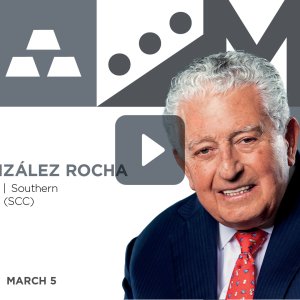
New Social Justice Plan Tackles Mining-Related Issues in Cananea
 By Paloma Duran | Journalist and Industry Analyst -
Wed, 11/16/2022 - 16:34
By Paloma Duran | Journalist and Industry Analyst -
Wed, 11/16/2022 - 16:34
One year after the implementation of the new Comprehensive Care Plan for Cananea, the federal government reported what progress it had made. The authorities pointed out that since the new plan covers health, labor, environment, urban development and social security matters, “justice” is being delivered to the community of Cananea.
Mexico’s Labor Minister Luis María Alcalde reported that the Ministry has issued 1,362 Welfare Cards to retired miners, with a monthly value of MX$5,258 (US$271.88) per person. In addition, the authorities announced that MX$236 million (US$12.20) were invested in various social programs that benefited 13,497 people.
Additionally, the Undersecretary for Democratic Development, Social Participation and Religious Affairs of the Ministry of the Interior (SEGOB), César Yáñez Centeno, reported that ten meetings were held with the representatives of the Industrial Union of Metallurgical, Mining and Similar Workers of the Mexican Republic (SNTMMSSRM) union’s section 65 to solve their labor and welfare issues.
The Director General of the Mexican Institute of Social Security (IMSS), Zoé Robledo, reported that it opened several medical units and opened new clinics, enabling a nearly-full supply of medicines. Meanwhile, the Head of the Institute of Health for Welfare (INSABI), Juan Antonio Ferrer, reported that the remodeling of the Cananea General Hospital has been completed, as well as the restoration and maintenance of 14 health centers.
The Representative of the Ministry of Environment and Natural Resources (SEMARNAT), Eduardo Gonzáles, said it conducted 392 tests to detect contaminants in the region. In addition, CONAGUA General Director Germán Martínez reported that the government invested MX$4 million (US$206,829.28) to review drinking water systems in Cananea.
"The solution of the political-union problems is fundamental, in such a way that the ‘Justice Plan’ for Cananea not only translates to material well-being but also in a mental, political and emotional form of well-being. I think that we managed to deliver a comprehensive justice plan for Cananea," said President López Obrador.
What Troubles Cananea?
For years, former workers of the Cananea copper mine have said that they are owed US$54 million due to a conflict in 1990, when the mine was privatized and became the property of Grupo México. In addition to this claim, the SNTMMSSRM union’s section 65 has held an unofficial strike since 2007, arguing that the working conditions at the mine are unsafe. In 2010, a court ruling ended the contract between the union and Grupo México. Nevertheless, the strike continued. The resolution of the conflict is significant since Cananea, now called Buenavista del Cobre, is the company's largest copper mine in the country.
Moreover, On Aug. 6, 2014, the mine reported a spill of 40,000m³ of acidified copper sulfate in the Bacanuchi and Sonora rivers, affecting 22,000 people in seven municipalities that no longer had drinking water as a result.
Grupo México created a US$106 million fund to remedy the environmental and health damages caused by the spill. However, the fund closed after less than 1 percent of the total amount had been used, and therefore no tangible changes were achieved, El Informador reported. Grupo México argued that its Buenavista mine has been a driver of development for Cananea. It has also reaffirmed its commitment to the well-being of the environment and its communities.
















